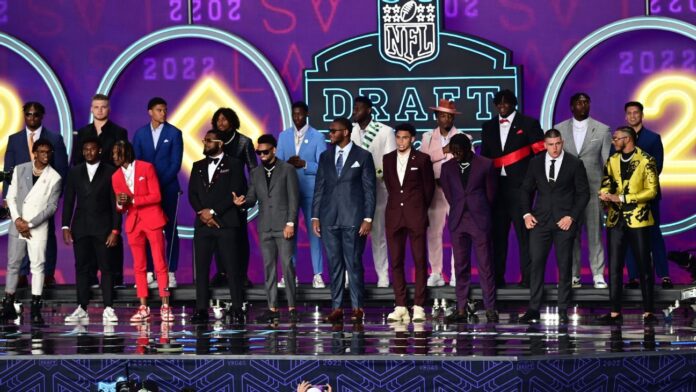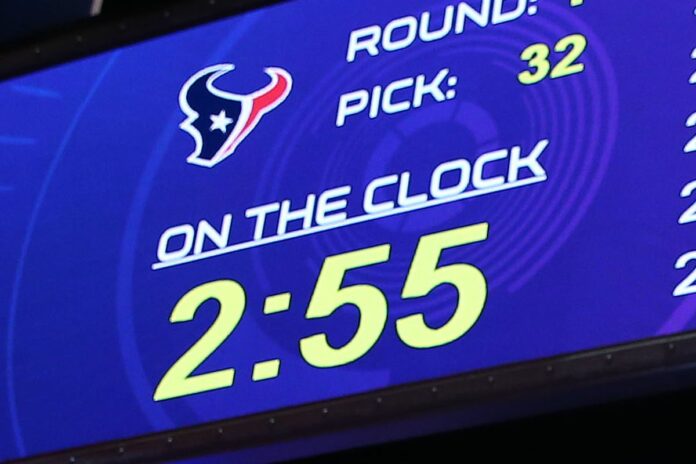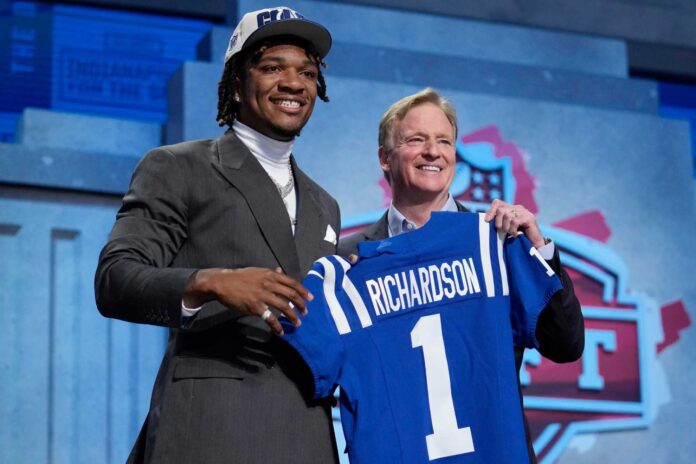Every springtime, a new hope emerges for the National Football League (NFL) teams, specifically for those that garnered poor win-to-loss records in previous seasons, because the NFL draft held in April aims to infuse new talent into the NFL teams to improve their roster.
These college players may be new blood, but sometimes, these newbies are diamonds in the rough as shown by Andrew Luck, Bruce Smith, Earl Campbell, and Terry Bradshaw who were all number one picks in the first round of the NFL draft.
As luck would have it, some of them will provide an instant boost to the strength of their teams if they get the best of the best, but others will not be so lucky.
During the draft, it is of utmost importance that they pick only those deserving of the role they will be given.
NFL uses three methods to develop their roster: drafting eligible college players, trading their players from other teams, and free-agent signings. As such, the three-day event allows all 32 teams to take turns selecting these players.
So, in this article, we will delve into the draft event that determines future wins or losses of NFL teams by exploring the ground rules and selection process.
This is a good article to read if you are not that familiar with the NFL draft.
Ground Rules

You might want to know that the NFL draft always happens in April, which is between the Super Bowl date and the training camp in July. However, the exact draft dates vary annually.
The NFL draft comprises seven rounds, with round one often being held on Thursday, rounds two and three on a Friday, and rounds four through seven on a Saturday.
The usual round comprises 32 picks, allowing each team with an estimate to pick one per round.
Some teams may engage in NFL draft picks more than once while other teams may not engage in any picks at all, considering this is a heavy-handed choice to make due to the roster being a crucial component to the success of a team, as picks per team differ because of player trading.
As such, the NFL can even award additional picks to a team, should the team lose players designated as restricted free agents in that particular scenario.
To explain, a free agent is a player whose contract has expired and would be eligible to sign with another team while a restricted free agent involves a player from another team making an offer with the caveat that his current team is allowed to match that offer in the first place.
Should the current team choose not to match that offer, they may receive compensation in the manner of a draft choice instead.
Because of these rules, the NFL awards compensatory picks on the basis of the net loss of restricted free agents. However, there is a limit of four per team compensatory picks.
Due to the addition of expansion teams and compensatory picks, the total number of draft picks has differed since the draft was scaled down to seven rounds in 1994.
Since that change, the 2003 and 2024 drafts are tied for the most players selected in the history of NFL, which is 262. From the period of 1977 to 1993, the draft comprised 12 rounds, and between 1967 to 1976, there were a total of 17 rounds per draft.
Time Rules

At the precise moment that the Super Bowl game clock expires, a new clock begins to tick, which is the clock that ticks down to the first players chosen in the NFL draft in April.
With a team being on the clock, it means that it must consider the next selection in the draft, also thinking about the set amount of time to make that selection.
As the first selection team is on the clock from the end of January, when the Super Bowl is played, the real clock starts on the draft day itself.
In the duration of the draft, there will always be one team on the clock. There will always be 10 minutes to spare for teams to make their choice in round one. The decision time is reduced to seven minutes in round two, with five minutes in rounds three to six, while it is only four minutes in round seven.
Should a team fail to decide before the allotted time, the subsequent team can pick before them.
However, the team that missed its selection can submit it thereafter at any time, but they risk losing the player they were considering to another team if they miss their selection. As such, the draft position of a team involves a reverse correlation with the success it achieved during the previous year.
This is the reason why teams with the worst record have the first pick of each round, with the Super Bowl champion being the last one to pick.
The War Table

Teams do not just go blind and choose a player out of sheer luck, but they actually assess the college players’ abilities months if not years in advance prior to the NFL draft.
There are general managers, coaches, scouts, and even team owners who compile notes and statistics in their evaluation of hundreds of college football’s crème of the crop before making their selection.
In February, the NFL Scouting Combine is another perfect chance for teams to familiarize themselves with the players as it is an event held annually where more than 300 of the top eligible players are invited to highlight their abilities to the teams.
The combine happens to be when media and fans begin their focus on the draft day itself as well.
Upon assessing the players, the teams will make their own lists for the players they wish to draft, and then determine their alternative selections because drafting any specific player is not always guaranteed.
Conclusion

This article explored and explained the selection process as well as the ground rules of the NFL draft in a manner that is easy to understand.
As you know, there are millions of students who participate in football annually, and that means getting drafted is a very competitive space. As such, only the best of the best gets into the NFL selection process.








